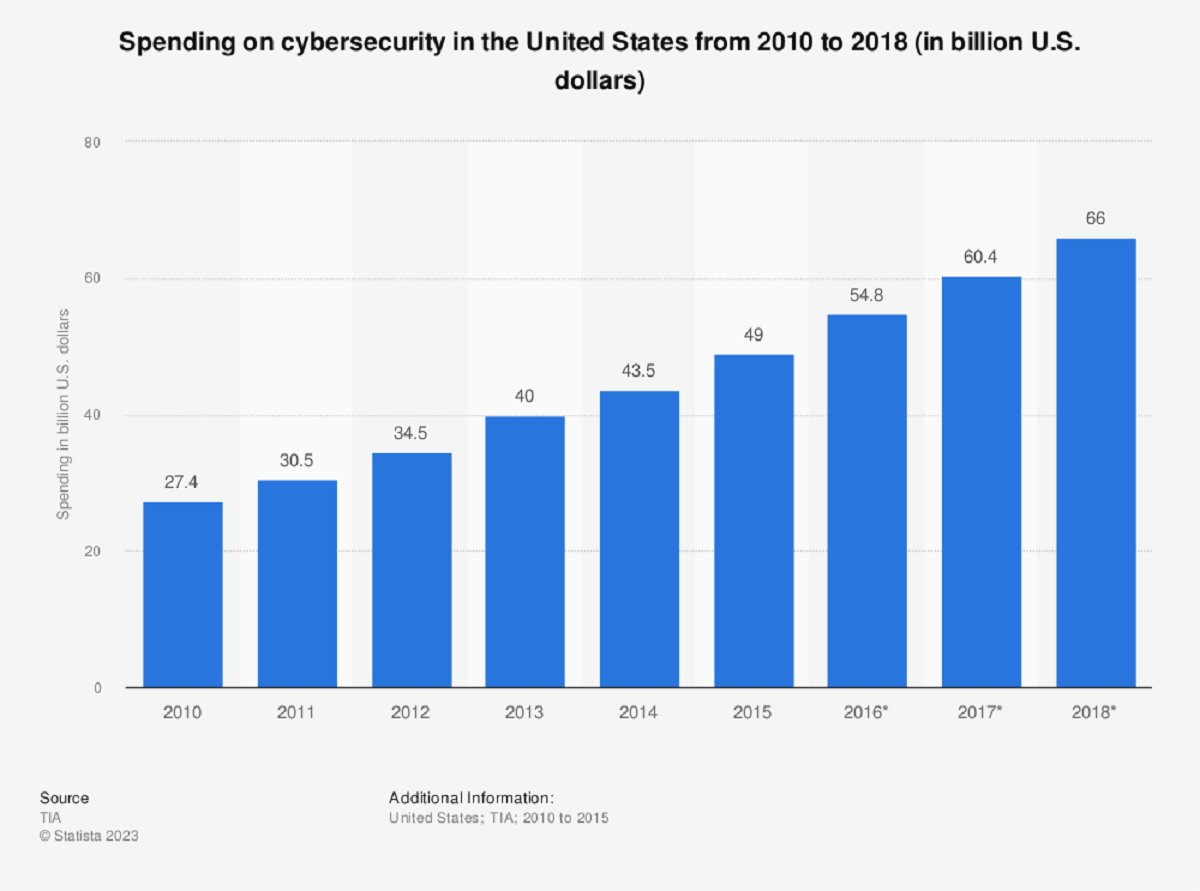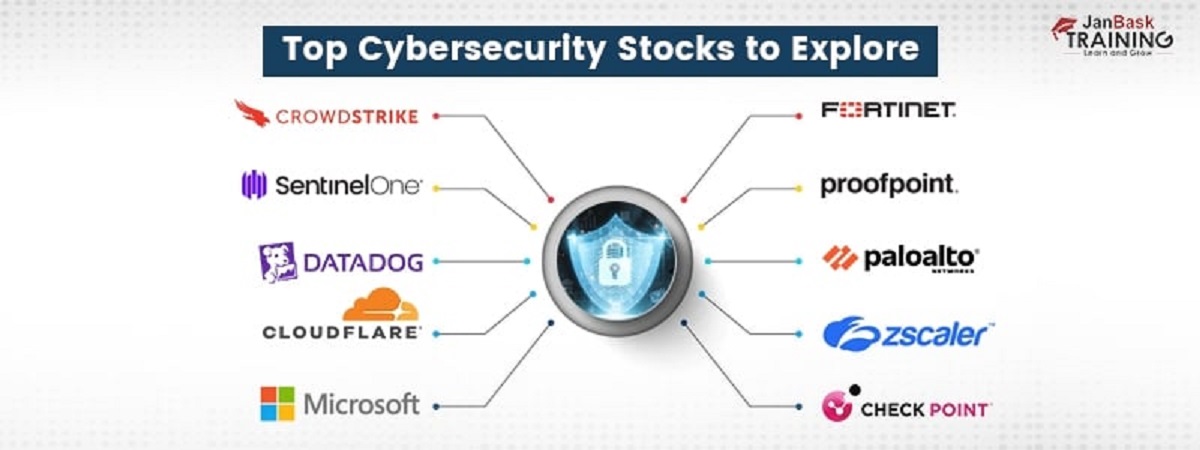Introduction
Welcome to the world of cybersecurity, where the protection of sensitive data and defending against online threats are paramount. In today’s digital landscape, the ever-evolving nature of cyberattacks has placed an increasing emphasis on companies to prioritize their cybersecurity efforts.
Cybersecurity is a broad term encompassing various measures, technologies, and practices put in place to safeguard computer systems, networks, and data from unauthorized access, disruption, or theft. It has become an essential aspect of business operations across all industries, as organizations increasingly rely on digital infrastructure to store valuable information and conduct day-to-day operations.
The rise in cybercrime and the potential financial and reputational damage it can inflict on businesses has necessitated a robust defense strategy. Companies must not only protect their proprietary data but also safeguard the personally identifiable information (PII) of their customers and stakeholders.
Failure to adequately invest in cybersecurity can have severe consequences. The cost of a data breach can be astronomical, ranging from financial losses to legal consequences and damage to a company’s reputation. According to the Ponemon Institute’s 2020 Cost of a Data Breach Report, the average global cost of a data breach was a staggering $3.86 million.
As cyber threats continue to increase in sophistication and frequency, companies must allocate resources and budget towards implementing effective cybersecurity measures. This article explores the factors that influence companies’ cybersecurity investment, along with statistics on cybersecurity spending, budget allocation, best practices for optimizing spending, and the consequences of insufficient cybersecurity investment.
Join us as we delve into the world of cybersecurity spending, uncovering the strategies and challenges faced by organizations in safeguarding their digital assets from cyber threats. Let’s examine how much companies are willing to spend on protecting their data and the implications of making cybersecurity a top priority.
Understanding the Importance of Cybersecurity for Companies
In today’s hyper-connected world, businesses of all sizes face a multitude of cyber threats that can compromise their operations, sensitive data, and reputation. Cybersecurity is not just an option for companies; it’s a necessity.
One of the primary reasons why cybersecurity is crucial for organizations is the protection of critical data. Companies hold a wealth of information, including customer data, financial records, intellectual property, and trade secrets. If this valuable data falls into the wrong hands, it can result in significant financial losses, damage to brand reputation, and legal ramifications.
Cyber attacks can take various forms, such as malware, ransomware, phishing, and social engineering. These tactics can infiltrate systems, steal data, disrupt operations, or even hold companies hostage by encrypting their critical files. Without robust cybersecurity measures in place, companies are vulnerable to such attacks.
Furthermore, companies often handle sensitive customer information, including credit card numbers, social security numbers, and medical records. Failing to protect this information can lead to severe consequences for both the customers and the company. Data breaches can lead to identity theft, financial fraud, and potential lawsuits, causing irreparable harm to a company’s reputation.
Cybersecurity is also essential for maintaining business continuity. A successful cyber attack can result in downtime, rendering systems and networks inaccessible. This can have a devastating impact on productivity, customer service, and revenue generation. By investing in cybersecurity measures, companies can mitigate the risk of disruptions and ensure the smooth running of their operations.
Moreover, complying with industry regulations and data protection laws is another critical aspect of cybersecurity for businesses. Government and industry bodies have implemented regulations to ensure the protection of personal and sensitive information. Failure to comply with these regulations can result in substantial fines and penalties, further emphasizing the need for robust cybersecurity measures.
Finally, investing in cybersecurity can give companies a competitive advantage. In today’s digital era, customers prioritize the security and privacy of their data. Companies that can demonstrate a commitment to cybersecurity can win the trust of their customers and differentiate themselves from their competitors.
In summary, the importance of cybersecurity for businesses cannot be overstated. It protects critical data, maintains business continuity, ensures compliance with regulations, and enhances customer trust. By investing in cybersecurity, companies can safeguard their assets, maintain a competitive edge, and mitigate the risks posed by the ever-evolving cyber threat landscape.
Factors Influencing Companies’ Cybersecurity Investment
When it comes to determining the level of investment in cybersecurity, companies consider a range of factors. These factors play a crucial role in shaping an organization’s cybersecurity strategy and budget allocation. Let’s explore some of the key factors that influence companies’ cybersecurity investment decisions.
1. Risk Assessment: Companies assess the level of risk they face from cyber threats based on their industry, size, and the sensitivity of the data they handle. Industries such as finance, healthcare, and government tend to face higher risks due to the valuable and sensitive nature of their data. A comprehensive risk assessment helps companies gauge the potential impact of a cyber attack and determine the appropriate level of cybersecurity investment.
2. Regulatory Compliance: Compliance with industry regulations and data protection laws is a significant driver of cybersecurity investment. Organizations must meet specific security requirements outlined by regulatory bodies to protect customer data adequately. Failure to comply with these regulations can lead to severe penalties and reputational damage.
3. Previous Security Incidents: Companies that have experienced past security incidents are more likely to invest in cybersecurity. A breach or cyber attack serves as a wake-up call, highlighting the vulnerabilities within their systems. Organizations recognize the need to enhance their security measures to prevent a similar incident from occurring in the future.
4. Company Size and Industry Maturity: Larger companies typically have more resources to invest in cybersecurity compared to smaller organizations. Industry maturity also plays a role, as sectors that have experienced high-profile cyber attacks tend to allocate more resources to strengthen their defenses.
5. Board and Executive Involvement: The level of importance given to cybersecurity by the board of directors and executive leadership greatly influences investment decisions. When senior leaders understand the potential impact of cyber threats on the business and demonstrate a commitment to cybersecurity, it creates a culture of security-consciousness that drives investment.
6. Emerging Threat Landscape: The evolving nature of cyber threats and emerging attack vectors also influence cybersecurity investment. Companies must stay up to date with the latest threat intelligence and adapt their security measures accordingly. Investing in technologies and solutions that address current and emerging threats is crucial.
7. Cost of a Data Breach: Understanding the financial implications of a data breach can motivate companies to invest in cybersecurity. Research shows that the average cost of a data breach is significant, encompassing expenses such as incident response, remediation, legal fees, and reputational damage. Investing upfront in strong cybersecurity defenses can help mitigate these costs.
By considering these factors, companies can make informed decisions about their cybersecurity investment. A comprehensive understanding of risks, compliance requirements, and the evolving threat landscape allows organizations to allocate resources effectively and implement robust security measures.
Statistics on Cybersecurity Spending
The increasing importance of cybersecurity has led companies to allocate a significant portion of their budget towards safeguarding their digital assets. Let’s explore some eye-opening statistics on cybersecurity spending to understand the scale of investment in this area.
1. Global Spending: According to Cybersecurity Ventures, global spending on cybersecurity is projected to exceed $1 trillion between 2020 and 2025. This staggering figure showcases the recognition of the growing threat landscape and the need to invest in cybersecurity measures.
2. IT Security Budget Allocation: The average allocation of IT budgets to cybersecurity varies across industries. According to a survey by IDG, the banking and finance sector, on average, dedicates around 13% of their IT budget to cybersecurity, while healthcare allocates approximately 10%. Other sectors, such as manufacturing and retail, allocate around 8% and 7%, respectively.
3. Small and Medium-sized Enterprises (SMEs): Despite the perception that cybersecurity is predominantly a concern for larger enterprises, SMEs also recognize the importance of protecting their digital assets. According to a study by Kaspersky, SMEs allocate, on average, 10% of their overall IT budget to cybersecurity, indicating a growing awareness of cybersecurity threats among smaller businesses.
4. Industry Variation: Different industries have different cybersecurity spending patterns. The financial sector, due to its heavy reliance on secure systems and sensitive customer data, tends to spend more on cybersecurity. In comparison, retail and hospitality lag behind in cybersecurity investment, making them appealing targets for cybercriminals.
5. Outsourcing Security: A report by Gartner predicts a rise in the outsourcing of security services. By 2023, it is estimated that 50% of organizations will have outsourced their security operations, representing a shift in the way companies approach cybersecurity investment. Outsourcing allows organizations to access specialized expertise and enables them to focus on core business operations.
6. Cloud Security Spending: With the increasing adoption of cloud technologies, cybersecurity spending in this area is also on the rise. According to Gartner, by 2023, 60% of organizations will have implemented cloud workload protection platforms (CWPP) to secure their cloud environments, highlighting the importance of investing in cloud-specific security solutions.
7. Artificial Intelligence (AI) and Machine Learning (ML): AI and ML are also gaining traction in the field of cybersecurity. Organizations are investing in AI-based tools to enhance threat detection and response capabilities. According to a report by MarketsandMarkets, the AI in cybersecurity market is expected to reach $38.2 billion by 2026, illustrating the growing interest in leveraging AI for cybersecurity purposes.
These statistics shed light on the significant investments being made in cybersecurity. Organizations recognize the financial and reputational damage that can result from cyberattacks and are actively allocating budget and resources towards protecting their digital assets and staying ahead of evolving cyber threats.
Breakdown of Cybersecurity Budget Allocation
Allocating the cybersecurity budget effectively is essential for organizations to ensure comprehensive protection against cyber threats. Let’s explore the breakdown of cybersecurity budget allocation to better understand how companies invest in various aspects of cybersecurity.
1. Security Infrastructure: A significant portion of the budget is typically allocated to security infrastructure. This includes investments in firewalls, intrusion detection systems, secure network architecture, endpoint protection, and other hardware and software solutions that form the foundation of a strong cybersecurity posture.
2. Security Operations: Another crucial component of cybersecurity budget allocation is security operations. This includes investments in security information and event management (SIEM) systems, security analytics platforms, threat intelligence services, and incident response capabilities. Investing in these areas enables organizations to proactively monitor, detect, and respond to security incidents.
3. Security Awareness and Training: Employee training and awareness programs play a vital role in maintaining a strong security culture within an organization. Allocating a portion of the cybersecurity budget to training programs, workshops, and security awareness campaigns helps educate employees about cybersecurity best practices and fosters a heightened sense of vigilance against potential threats.
4. Third-Party Services: Many organizations leverage third-party services to augment their cybersecurity capabilities. This includes outsourcing managed security services, penetration testing, vulnerability assessments, and forensic analysis. Investing in these services allows organizations to benefit from specialized expertise and gain a comprehensive understanding of their security posture.
5. Data Protection and Privacy: With the increasing emphasis on data protection and privacy, budget allocation for data encryption, data loss prevention (DLP) solutions, secure data storage, and access controls is vital. Protecting sensitive data and complying with data protection regulations are critical for maintaining customer trust and avoiding data breaches.
6. Emerging Technologies: Allocating a portion of the cybersecurity budget to emerging technologies can be beneficial in staying ahead of evolving threats. Investments in artificial intelligence (AI), machine learning (ML), and behavioral analytics can augment security capabilities and help identify and mitigate advanced threats more effectively.
7. Incident Response and Recovery: Acquiring and maintaining incident response capabilities is crucial to minimize the impact of a security incident. Investments in incident response planning, data backup and recovery solutions, and system restoration processes help organizations quickly recover from a security breach, reducing downtime and mitigating financial and reputational damage.
8. Compliance and Auditing: Organizations must allocate resources to ensure compliance with industry regulations and conduct regular security audits. This includes investing in compliance management tools, penetration testing, regular security assessments, and internal auditing processes to identify and address vulnerabilities and ensure adherence to regulatory requirements.
By strategically allocating their cybersecurity budgets across these areas, organizations can build a robust cybersecurity framework that addresses various threats and vulnerabilities. It is important to continuously monitor the threat landscape, reassess budget allocation based on risk profiles, and ensure alignment with the organization’s overall security strategy.
Challenges Faced by Companies in Allocating Budget to Cybersecurity
While the importance of cybersecurity investment is widely recognized, companies often face challenges when it comes to allocating the budget effectively. Let’s explore some of the common challenges that organizations encounter in allocating budget to cybersecurity.
1. Limited Resources: A significant challenge for many organizations, especially small and medium-sized enterprises (SMEs), is limited resources. Companies operating on tight budgets may struggle to allocate sufficient funds to cybersecurity, as other business priorities compete for financial resources. Limited resources can hinder the ability to invest in robust security infrastructure, security operations, and specialized cybersecurity personnel.
2. Difficulty in Measuring ROI: Unlike other business investments, measuring the return on investment (ROI) for cybersecurity can be challenging. It can be difficult to quantify the value of preventative measures and demonstrate the direct financial impact of avoiding a potential cyber attack. This can make it harder to justify cybersecurity budget allocation to company stakeholders.
3. Lack of Awareness and Understanding: Cybersecurity is a complex field, and many decision-makers may lack awareness or understanding of the potential risks and impact of cyber threats. Without a clear understanding of the consequences of inadequate cybersecurity measures, decision-makers may under-prioritize cybersecurity investments or fail to allocate sufficient budget for comprehensive protection.
4. Balancing Prevention and Detection: Allocating budget between prevention and detection can pose a challenge. While preventative measures can help mitigate the risk of security incidents, organizations must also invest in detection and incident response capabilities. Striking the right balance in budget allocation between these areas is crucial for maintaining a proactive and resilient security posture.
5. Evolving Threat Landscape: The cybersecurity landscape is continuously evolving, with new threats emerging regularly. Budget allocation needs to keep up with the evolving threat landscape to ensure that organizations are adequately protected against the latest attack vectors. Failure to allocate budget towards emerging technologies and security solutions can leave organizations vulnerable to new and sophisticated threats.
6. Cost of Talent: Recruiting and retaining skilled cybersecurity professionals can be an expensive endeavor. The demand for cybersecurity talent often outweighs the supply, resulting in higher salaries and competition among companies. Allocating budget towards hiring and training qualified personnel can strain a company’s cybersecurity budget.
7. Vendor Evaluation and Selection: Selecting the right cybersecurity vendors, products, and services can be a daunting task. The market is saturated with numerous options, and evaluating the effectiveness and reliability of these solutions can be challenging. Poor vendor selection can lead to an ineffective use of budget and inadequate protection against cyber threats.
Overcoming these challenges requires a proactive approach. Communication and education within the organization regarding the importance of cybersecurity, the potential impact of cyber threats, and successful cybersecurity case studies can help build awareness and understanding. Conducting thorough risk assessments, consulting with cybersecurity experts, and regularly reassessing the allocation of resources can also enable organizations to allocate their budget more effectively.
Best Practices for Optimizing Cybersecurity Spending
Optimizing cybersecurity spending is essential for organizations to maximize their protection against cyber threats while ensuring efficient use of resources. Here are some best practices to consider when allocating and optimizing cybersecurity spending:
1. Conduct Risk Assessments: Start by conducting regular risk assessments to identify the potential threats and vulnerabilities within your organization. Assess the potential impact of different security incidents and prioritize investments based on the level of risk. This helps ensure that resources are allocated where they are most needed.
2. Develop a Comprehensive Strategy: Have a well-defined cybersecurity strategy in place that aligns with your organization’s overall goals and risk appetite. Establish clear objectives, milestones, and measurable targets to guide your budget allocation decisions. This helps ensure that investments are strategic and focused on addressing the most critical security challenges.
3. Implement a Defense-in-Depth Approach: Adopt a defense-in-depth strategy that combines multiple layers of security defenses. Instead of relying on a single security solution, distribute your budget across a range of measures such as firewalls, intrusion detection systems, user authentication, encryption, and employee training. This layered approach maximizes your protection and reduces the likelihood of a successful attack.
4. Prioritize Essential Security Controls: Not all security controls are created equal. Prioritize investments in essential security controls that provide the greatest impact. Focus on areas such as strong access controls, regular patch management, proactive threat intelligence, continuous monitoring, and incident response capabilities. These foundational controls form the backbone of a strong cybersecurity posture.
5. Regularly Update and Patch Systems: Allocate a portion of your budget to ensure that all systems, software, and devices are regularly updated with the latest security patches. Outdated software and unpatched vulnerabilities are common entry points for cyber attackers. Regular updates help minimize the risk of exploitation and strengthen your overall security posture.
6. Invest in Employee Training: Allocate resources to educate employees on cybersecurity best practices. Human error contributes significantly to security incidents, so investing in regular training programs and awareness campaigns helps foster a culture of security-consciousness. Empower employees with the knowledge and skills to identify and mitigate phishing attempts, social engineering attacks, and other common threats.
7. Embrace Automation and AI: Leverage automation and artificial intelligence (AI) technologies to enhance your cybersecurity capabilities. Invest in AI-driven threat detection tools, machine learning algorithms, and security automation platforms. These technologies can help identify and respond to threats in real-time, reduce manual efforts, and improve overall efficiency.
8. Regularly Evaluate and Adjust: Cybersecurity is an ongoing process that requires constant evaluation and adjustment. Regularly review your security investments, measure their effectiveness, and make adjustments where necessary. Stay abreast of emerging threats and technologies to ensure that your budget remains agile and adaptive.
By following these best practices, organizations can optimize their cybersecurity spending, strengthen their defenses, and effectively mitigate the risks associated with cyber threats. A strategic and proactive approach to budget allocation helps ensure that resources are allocated where they provide the greatest value and protection.
Consequences of Insufficient Cybersecurity Investment
Insufficient investment in cybersecurity can have severe consequences for organizations, impacting their financial stability, reputation, and overall business operations. Let’s explore some of the potential consequences of inadequate cybersecurity investment:
1. Data Breaches: Insufficient cybersecurity measures make organizations more vulnerable to data breaches. A data breach can result in unauthorized access to sensitive information, including customer data, financial records, or intellectual property. The financial and reputational damage caused by a data breach can be significant, leading to financial losses, regulatory penalties, and loss of customer trust.
2. Financial Losses: Cyber attacks can cause substantial financial losses for organizations. The cost of remediation, data recovery, incident response, and legal fees can be exorbitant. Additionally, organizations may face regulatory fines and lawsuits resulting from the breach. The Ponemon Institute’s 2020 Cost of a Data Breach Report found that the average cost of a data breach was $3.86 million.
3. Damage to Reputation: A cybersecurity incident can severely damage an organization’s reputation. News of a data breach or cyber attack can spread rapidly, leading to negative media coverage, public scrutiny, and a loss of trust from customers, suppliers, and partners. Rebuilding a tarnished reputation takes time and significant effort, impacting future business opportunities and customer loyalty.
4. Loss of Intellectual Property: Inadequate cybersecurity measures can make organizations susceptible to intellectual property theft. Intellectual property, such as trade secrets, patents, and proprietary technologies, is valuable and often represents a competitive advantage. Unauthorized access to and theft of intellectual property can result in lost opportunities, diminished market position, and financial losses.
5. Downtime and Business Disruption: Cyber attacks can lead to system downtime and business disruption. Ransomware attacks, for example, can encrypt critical files and render systems and networks inaccessible until a ransom is paid. This can halt operations, disrupt supply chains, and result in lost productivity, revenue, and customer dissatisfaction.
6. Compliance Violations: Organizations are subject to industry regulations and data protection laws. Insufficient investment in cybersecurity can lead to compliance violations, resulting in penalties, fines, and legal consequences. Compliance failures not only damage a company’s reputation but can also lead to the loss of business licenses and privileges.
7. Impact on Business Relationships: Poor cybersecurity practices can affect relationships with business partners, suppliers, and customers. In today’s interconnected business ecosystem, organizations are often required to demonstrate strong cybersecurity measures to do business. Failure to meet these standards can result in lost partnerships, restricted business opportunities, and decreased customer confidence.
8. Increased Recovery Time and Cost: Recovering from a cybersecurity incident can be time-consuming and expensive. Inadequate cybersecurity investment can prolong the recovery process, increasing the time it takes to return to normal business operations. This can result in additional costs, disruptions, and further financial losses.
Organizations that do not prioritize cybersecurity investment expose themselves to significant risks and potential consequences. By recognizing the importance of robust cybersecurity measures and allocating the necessary resources, organizations can mitigate these risks and protect their assets, reputation, and long-term viability.
Conclusion
Cybersecurity has become a critical aspect of business operations, as organizations face an ever-evolving threat landscape and the potential consequences of cyber attacks. Investing in cybersecurity is not only necessary but also essential for protecting sensitive data, maintaining business continuity, complying with regulations, and safeguarding the trust of customers.
Throughout this article, we have explored the various aspects of cybersecurity investment, including the importance of understanding its significance for companies. We have examined the factors that influence cybersecurity investment decisions, the statistics highlighting the scale of cybersecurity spending globally, and the breakdown of budget allocation.
Furthermore, we have touched upon the challenges faced by organizations in allocating budget to cybersecurity and provided best practices for optimizing cybersecurity spending. By following these practices, organizations can make strategic and informed decisions to ensure that their investments effectively protect against cyber threats.
Insufficient cybersecurity investment can have severe consequences, such as data breaches, financial losses, damage to reputation, and business disruption. These consequences highlight the importance of proactive investment in cybersecurity and the potential risks of disregarding its significance.
In summary, organizations must recognize the critical role that cybersecurity plays in their overall business strategy. By allocating resources, implementing robust security measures, training employees, and staying informed about emerging threats, organizations can enhance their cybersecurity posture and mitigate the potential risks associated with cyber attacks.
Investing in cybersecurity is not just an expenditure; it is an investment in the long-term sustainability and success of an organization. By making cybersecurity a priority, companies can protect their valuable data, uphold the trust of their stakeholders, and maintain a competitive edge in today’s digital landscape.

























